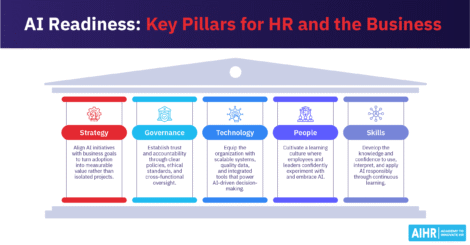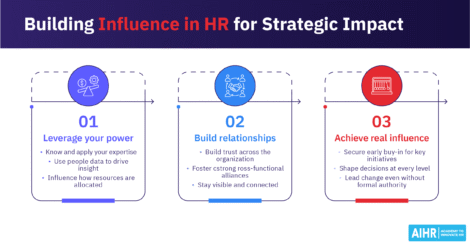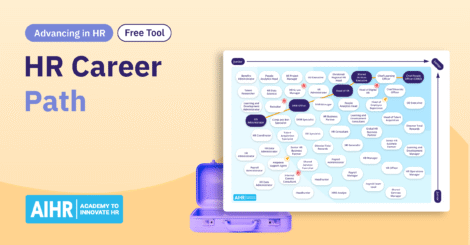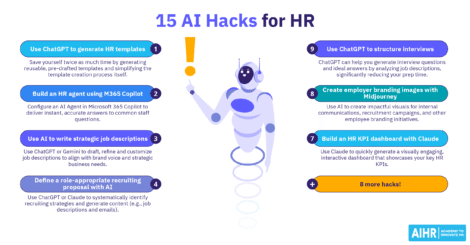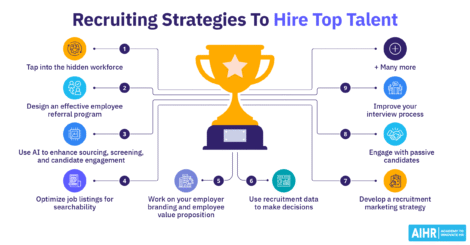This article was co-authored with Michelle Fields.
Psychological safety at work is a key ingredient of a healthy organizational culture, and a concept well familiar to HR. Yet despite ongoing initiatives, efforts, and awareness, it’s facing a troubling decline. In an era shaped by hybrid and remote work, the rapid adoption of AI, and high levels of uncertainty, the traditional efforts to build psychological safety – employee surveys, leadership workshops on communication and inclusion, and manager training – may no longer be fit for purpose.
While most HR professionals have actively championed psychological safety, many organizations still encounter familiar challenges: team members hesitant to speak up, stagnating or declining engagement scores, and a quiet undercurrent of resistance to change.
This article explores why psychological safety is faltering despite best intentions and what HR can do about it.
Contents
What is psychological safety?
Psychological safety examples
Why does psychological safety at work matter?
Why is psychological safety declining?
HR’s evolving role: Architect, not owner of psychological safety
How to create psychological safety at work: 5 practical strategies for HR
What is psychological safety?
Psychological safety at work is a shared belief that it’s safe to take interpersonal risks within a team. That includes speaking up with questions, flagging mistakes, offering dissenting opinions, or admitting you don’t know something. More broadly, psychological safety refers to the sense of being able to show and employ oneself without fear of negative consequences.
It’s not about being comfortable all the time or about avoiding conflict. In fact, psychological safety enables healthy conflict, with trust, candor, and mutual respect as the foundation.
For me, I think it very much means now how people can show up in the workplace. So yes, it’s about how they feel safe, whether they can give ideas or voice their opinions, but it’s also about not having to mask who you are anymore in the workplace as much as you feel comfortable doing so.

Even though Carl Rogers coined the term in the 1950s, two well-known models of psychological safety are:
- Edmondson’s model, which focuses on team climate and interaction, and;
- Clark’s model, which views psychological safety as various stages that need to be progressed through.
Amy Edmondson’s Team Psychological Safety Model
Team-level interpersonal risk-taking
- Shared belief it’s safe to speak up
- Encourages candor, learning, experimentation
Ideal for team performance diagnostics, learning culture initiatives, and agile transformation
Timothy R. Clark’s Four Stages of Psychological Safety
Psychological needs and progressive maturity
-
Stage 1. Inclusion Safety
-
Stage 2. Learner Safety
-
Stage 3. Contributor Safety
Stage 4. Challenger Safety
Great for leadership development, DEIB programs, and cultural maturity assessments
Psychological safety has evolved from a theoretical construct into a practical lens for understanding how people experience their work environment. Today’s assessments go beyond the individual. They examine how leader behavior, team norms, and the broader organizational climate shape the conditions for speaking up, taking risks, and learning from failure.
This reflects a growing understanding that psychological safety doesn’t exist in a vacuum. It’s tightly linked to learning culture, feedback dynamics, and readiness for innovation. More organizations are pairing psychological safety metrics with related concepts. These include concepts like employee voice, belonging, and trust to make psychological safety an integral part of climate and culture. These behavioral and emotional signals offer actionable insight, revealing whether people feel safe to speak up and whether they’re empowered and supported to do so.
Psychological safety examples
Let’s explore what psychological safety can look like in practice through two illustrative examples.
Normalizing failure as a learning opportunity
At BrightWave Technologies, a failed product feature became a shared learning moment. Instead of assigning blame, the team held a “failure post-mortem,” capturing lessons in their internal wiki so everyone could benefit. This approach ”normalized” failure, enabling people to speak up without fear of consequences and turning failure into a learning experience for all.
Breaking down barriers so that every voice matters
At Lumenara Health, CEO Priya Desai noticed a junior analyst hesitating during a project review. After the meeting, she invited the analyst for coffee, clarifying there were no “right” answers, only honest perspectives. Priya asked, “If you were in my role, what would you do differently?” , The analyst shared a concern about the pace of a new initiative. Priya thanked them and brought the point into the next leadership discussion, crediting the analyst by name. The exchange sent a powerful signal that feedback flows both ways, and even the most senior voices are open to being challenged.
Why does psychological safety at work matter?
Psychological safety at work is one of the strongest predictors of team effectiveness and organizational health. Research consistently shows that psychological safety underpins innovation, productivity, retention, and overall organizational resilience. Let’s take a look at why psychologically safe businesses thrive:
- Encourages openness and drives learning and agility: When employees feel secure enough to voice their thoughts without fear of reprisal, they are more inclined to offer innovative solutions, acknowledge errors, seek assistance, and provide constructive criticism. These behaviors are vital for continuous learning and agility in today’s dynamic work environments.
- Boosts team performance: McKinsey’s research highlights that teams with high psychological safety demonstrate 76% greater engagement, 50% higher productivity, and a 74% lower likelihood of experiencing burnout compared to teams lacking it.
- Strengthens retention and inclusion: Gallup reports that organizations where employees feel their opinions are valued experience a 27% decrease in turnover, 40% fewer safety incidents, and 12% increased productivity.
- Shifts focus from self-protection to growth: When psychological safety is high, employees shift from self-protection to improving outcomes, fostering collaboration, and taking calculated risks.
- Prepares organizations for the future: Without psychological safety, individuals tend to withhold ideas, evade accountability, and are more prone to leave. In the current environment of hybrid work, AI disruption, and high levels of ambiguity, cultivating psychological safety is not merely about building a better culture; it’s about future-proofing the organization’s capacity to adapt and flourish.
Why is psychological safety declining?
Despite its strong link to innovation and adaptability, only 26% of leaders actively work on creating psychological safety in the workplace. What’s more, recent numbers show that psychological safety at work is getting worse.
A study by Henley Business School found that the number of employees who feel they can “bring their whole self to work” dropped from 66% in 2020 to just 41%. Another survey by Diversity.com found that while 86% of employees feel they belong, only 76% feel safe speaking up. This shows that even if people feel included, many still don’t feel safe being honest or raising concerns at work.
Several key factors are contributing to this unsettling trend:
- Mismanaged hybrid and remote work: The rise of hybrid and remote work has inadvertently complicated trust-building and seamless communication. Informal, spontaneous interactions have become less frequent, diminishing opportunities for candid dialogue and relationship-building. This does not imply that psychological safety cannot be high when working remotely. Instead, it points to the fact that many leaders have struggled to adapt to managing hybrid and remote teams in a way that promotes psychological safety.
- Anxiety over AI and job security: The accelerating integration of AI-driven automation amplifies job insecurity across industries. In response, employees are increasingly opting for silence over risk-taking, prioritizing the protection of their roles. Fear of becoming obsolete and news media reporting high levels of AI-led job replacement have sparked a lack of trust between employees and employers.
- DEIB stagnation: Stalled or superficial Diversity, Equity, Inclusion, and Belonging (DEIB) initiatives can leave underrepresented groups feeling excluded or unsafe, directly undermining the foundational elements of psychological safety. Recent developments in U.S. legislation have led many organizations to roll back their DEIB commitments, making many feel unsafe and excluded at work.
These factors show an urgent need for a fundamental rethink of our current HR strategies for building and promoting psychological safety.
HR’s evolving role: Architect, not owner of psychological safety
Many organizations make the mistake of believing that HR should own psychological safety. Psychological safety should never be the sole responsibility of HR. Instead, HR’s crucial role is to architect the conditions that naturally foster psychological safety throughout the organization.
This includes:
- Designing and implementing inclusive and transparent feedback, recognition, and performance management processes.
- Equipping leaders with the skills and behaviors to model psychological safety authentically.
- Actively encouraging open dialogue about what safety truly looks like within specific teams and organizational contexts.
- Rigorously revisiting existing policies that may inadvertently penalize risk-taking, honest feedback, or healthy dissent.
Crucially, HR must advocate for embedding psychological safety into the daily interactions and fabric of the workplace. This moves it beyond the confines of sporadic workshops or annual surveys.
I think traditionally, the thinking was that it’s HR’s role to create that psychological safety. I don’t believe that is the case. I think it is the leadership, it’s the managers within the company who are responsible for doing it. Our role is to architect that. Our role is to create opportunities for leaders and managers to enable psychological safety within their teams, and also to embed psychological safety growth within the employee experience.

How do you support and guide those leaders to embed little strategies within their ways of working, their behaviors, and how they engage their team? I don’t think, in reality, or at least on paper, embedding psychological safety is that difficult; just a lot of people don’t necessarily know effectively how to do it.

How to create psychological safety at work: 5 practical strategies for HR
Here are five actionable strategies for HR professionals to proactively rebuild and strengthen psychological safety:
1. Coach leaders to lead with openness and vulnerability
Leaders set the tone. When they admit mistakes, ask for input, or acknowledge when they don’t have the answer, they create a culture where it’s safe to be honest and imperfect. This encourages others to speak up without fear.
HR can coach leaders to be more open and vulnerable, and help them understand that vulnerability is not a sign of weakness.
2. Make safety part of everyday life
Psychological safety grows through consistent, small actions. Encourage practices like starting meetings with quick check-ins, creating space for respectful disagreement, and reflecting on what’s been learned. HR can support this by equipping managers with practical tools, such as prompts, reflection questions, or sample scripts, that make these practices a regular part of team routines.
Over time, these behaviors should become a core part of a manager’s responsibilities, reinforcing their role in shaping safe and inclusive team environments.

3. Use stories to support learning
Create regular opportunities for teams to reflect on successes, missteps, and lessons learned. Retrospectives or “failure stories” shift the focus from blame to growth, helping normalize honest conversations and collective learning. HR can help by introducing company retros or championing check-in moments.
HR can make this practical by setting up regular company retros, creating a simple template for sharing “what worked, what didn’t, what we learned” that teams can use in their lookbacks, or even starting meetings with a quick story spotlight.
4. Empower team champions
Not everyone feels comfortable going to their manager or HR. Train and support peer-nominated champions who can offer informal guidance, listen confidentially, and help surface issues early, thereby making psychological safety feel personal and accessible.
5. Use AI to spot patterns in team dynamics
AI tools can help identify trends in team dynamics, such as who’s speaking up and who’s not. Meeting analytics, for example, can show who speaks most (and least) during discussions, while sentiment analysis of surveys or chat channels can reveal shifts in tone or engagement. Collaboration insights platforms can also surface patterns of inclusion or isolation across teams.
These tools don’t measure psychological safety directly, but they provide useful indicators leaders and HR can act on, always with ethics, transparency, and human judgment at the center.
All these strategies have a caveat: they only work in organizations that genuinely value inclusion, foster a sense of belonging, and have leaders who respect human dignity. HR’s role is to ensure that these principles aren’t just words on paper but the foundation of every psychological safety initiative.
Moving forward: From safe to empowered
Psychological safety is not a static destination but a continuous journey that must evolve with our workplaces. HR professionals should embrace an iterative approach: pilot new methods, gather feedback, and co-create solutions with teams. Only then can HR genuinely build environments where employees feel safe and are deeply valued and empowered to contribute their best work.










